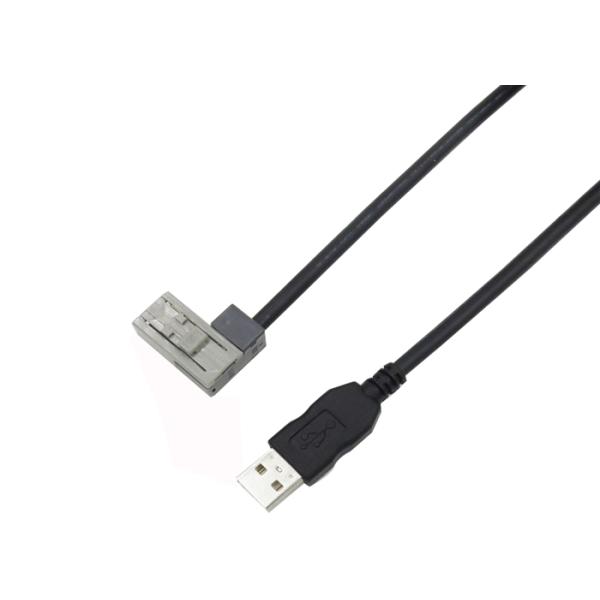| Sign In | Join Free | My frbiz.com |
|
| Sign In | Join Free | My frbiz.com |
|
| Categories | Cable Wiring Harness |
|---|---|
| Brand Name: | Sanyouhe |
| Model Number: | SYH-CW139 |
| Certification: | UL、IATF、ISO |
| Place of Origin: | JIANGSU,CHINA |
| MOQ: | Negotiable |
| Price: | Negotiable |
| Payment Terms: | T/T, L/C, D/A, D/P |
| Supply Ability: | 50000 PCS/per week |
| Delivery Time: | 3-15 days |
| Packaging Details: | 100/200/300/500pcs per bag , then outside carton |
| Wire length: | 500mm or customized |
| Contact type: | USB |
| Application: | Automobile |
| Wire gauge: | Customized |
| Wire Color: | Customized |
| Feature: | Moisture-proof |
USB Harness Assembly 500mm Black HRS Connector Plug-In Car Signal Cable
Product information:
A Wire Harness, also known as a cable harness or wiring assembly, is a grouping of wires, cables, or subassemblies designed to transmit signals or electrical power. A basic Wire Harness may include as few as three discreet components, while the more classic harnesses include many more wires and other passive, and potentially active, components.
Parameter:
| Wire length | 500mm or customized |
| Contact type | USB |
| Work frequency | High frequency |
| Application | Automobile |
| Wire gauge | customized |
| Wire Color | Customized |
| Connectors | customized |
| Feature | Moisture-proof |
| Shape | Strip |
| Test | Professional breakover and pulling force test before goods sent out |
| Contact material | Phosphor bronze |
| Cable materials | Wire harness can be UL/CSA,CE, VDE,SAA,CB etc and pure copper |
| Work frequency | Low frequency |
| Insulation | PVC |
| Connector Type | Original OEM or Replacement |
| Service | OEM and ODM products are acceptable |
| Order Quantity | Small quantity can be accepted,like 100pcs |
| Samples | Samples confirmed first before mass production |
| Certificates | RoHS,CE,UL,TUV,ISO |
| Lead time | Small orders under 500pcs is 7-10days,exceed 1000pcs 2-3weeks |
How Metal Becomes Wire
First, the majority of electrical wire is made from aluminum or copper. After refining the ore, metal is pulled into thick coils called rod. Rod is processed in large spools and then fed into a series of dies and rollers which stretch it out into its final thickness, or “gauge”. To be useful and to be safe, bare wire is covered in a continuous insulating sheath using various kinds of plastic that must withstand temperature extremes, solvents, water and UV exposure. This is performed with a plastic extrusion process not much different than that used to make plastic bottles.
Only a few kinds of plastic are best suited as insulation since they must be durable, flexible, accepting of different colored dies, and not too expensive. Common material includes polyethelene (PE), polyurethane (PU), rubber and polyvinyl chloride (PVC). Higher grades of material for better durability and mechanical strength may include nylon, silicone, FEP, and PTFE (Teflon).
How Wires Become Cables
Usually a single solid metal strand is considered a wire, while multiple strands or bundles of wire are called a cable. In both cases, they are conductors for electrical signals. They come in many types and sizes for power transmission and telecommunication. Telecom cables are often shielded, using an additional outer mesh of conductor separated from the inner core by an insulating layer. This secondary mesh is meant to prevent incidental electromagnetic radiation in the environment (radio, TV, mobile phone signals) from interfering with the transmission.
Connectors And Terminals
By themselves, wires and cables can do nothing. They must be connected to something to perform their function, and that’s where connectors come in. But what exactly is a connector? Well, a connector actually needs to perform a couple of functions that can be highly specialized.
Connectors use a metal terminal that is crimped or soldered to a corresponding conductor, and all of this is placed inside the plastic shell. Connectors are tasked with making mechanical joints between male and female terminals, not only holding the whole unit firmly in place but also protecting it from the outside environment. Usually the connector can be separated later for maintenance or replacement, making it an invaluable interface between the human user and the electrical device. And there are thousands of types of connectors in every conceivable size and shape, for every kind of device and purpose.
Making Overmolding For Wires and Circuit Boards
Some complicated assemblies combine printed circuit boards soldered to fine wires. These need to be sealed in a plastic housing to protect them, but how to do this without destroying the delicate electronics?
Overmolding uses low-melting-temperature plastic that’s slowly pressed over the entire assembly and then cooled, which makes a single solid block which seals and protects it. In this regard the overmolding process is a hybrid combination of die casting and plastic injection molding. This is a one-time process; the connector can never be opened again without destroying it, but it’s robust and reliable if done right.



|